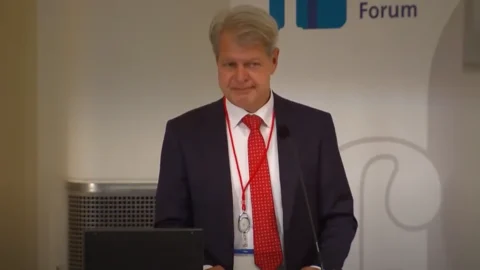Paul Krugman the great American economist recently wrote in the NYT that the time has come to "politicize the climate”. He was referring above all to the United States, but as far as Europe is concerned, it seems to me that we are already a step forward in terms of politicizing the choices to reach the goal of zero CO2 emissions. On the one hand, the collective environmentalist accuses of "denialism" anyone who raises doubts about the feasibility of the objectives set by the European Commission, while on the other environmentalists are accused of wanting to endanger European industries, the well-being of large groups of workers, in general of wanting to destroy the economic systems of our countries. In short, the fight to the death between factions risks cornering any rational solution based on serious scientific analyses, and on the economic sustainability. In the end, we could fail both the goal of decarbonization and that of maintaining an adequate level of growth in our economies while replacing fossil sources of energy with "clean" ones.
Head grain he was an environmentalist in his youth, then a member of the PCI/PDS and president of Enel. Now he is president of Assoambiente and is fighting to advance the green policies against the extremisms of environmentalists and the skepticisms of those who deny that there is an immediate danger to our planet and above all do not see the need to always introduce new and drastic bans which turn into an unsustainable cost for many businesses and large numbers of consumers. But both are struggling to indicate concrete things to do.
“I truly believe that an excess of polarization between an environmentalist left and a denial right can lead to a defeat for the left. It is no coincidence that the right is growing in many European countries. See what happened in Sweden or Holland, perhaps not only for environmental policies but also for the question of immigration. In Germany, according to polls, the neo-Nazis of the AfD are close to the social democrats and not far from the popular ones. In France we had the Yellow Vests and Le Pen is always stronger. We will soon see the outcome of the Spanish elections. If we limit ourselves to insults between opposing supporters, we risk obscuring the possibilities of launching a serious and necessary policy, based on research and innovation and on a realistic transition process that avoids playing only on the fears of those who fear losing their jobs on the one hand and those who think that the world is on the verge of catastrophe and that therefore drastic action must be taken immediately".
Many businessmen or politicians like Bill Gates or Francesco Rutelli have written books to indicate a possible way to save the world without "destroying humanity". But for the moment those who fan the flames of fear seem to prevail. A few days ago La Repubblica headlined "The massacre of the climate" indicating in the torrid heat of these days a pre-announcement of the end of the world. Then there are commentators who seek the golden mean, however, risking stopping to stigmatize opposing extremisms without giving concrete indications on how to advance to reduce emissions without causing social havoc.
“Some comments, like those of Antonio Polito in Corriere, seem well balanced to me. Others like Francesco Giavazzi make mistakes such as writing that CO2 emissions have fallen in the last twenty years when they have risen a lot in the world and, apart from periods of economic and health crisis, they continue to rise. And this happened again last year also due to the greater use of fossil fuels, including coal. Controversy often rages over very simple issues like measuring heat. Many do not know how to use the thermometer!
Paolo Sottocorona, the meteorologist of La 7, has been accused of being a denier just because he criticized some exaggerations of the newspapers that have released incorrectly measured heat figures creating panic among the people for no real reason. This does not mean denying climate change, but the weather must not be confused with the climate.
With this type of controversy it is not possible to make a concrete and calm speech on the transition process which will not be a gala dinner, will have costs and will impose changes in habits, but everything must be reasonable and seriously demonstrated to convince public opinion of the opportunity to take that path".
And instead it doesn't seem to me that some decisions are well motivated. There are doubts about the electric car, for example, and even more about the coat for houses. And then it must be clear who will have to pay for the necessary investments and for the price increase. Looking at what has been done so far and at the decisions taken, there is also the doubt that the advantages from the point of view of CO2 emissions have not been correctly calculated. And that is that it is not so true that taking certain roads will significantly reduce greenhouse gas emissions.
“From an economic point of view, I am amazed at the low quality of Brussels studies on the economic consequences of certain decisions. There is often talk of creating thousands of jobs but this is not convincingly demonstrated. On an internal level, our experience with renewables has led to an increase in bills for users of over 13 billion a year. It is a real hidden tax and moreover with a regressive nature. In the sense that those with incomes and therefore lower consumption pay more. The left should pay more attention to the distribution of burdens for the environmental policies it champions, always asking itself in advance: who will have to pay?
As far as the results regarding the reduction of emissions are concerned, it is a question of making very complex calculations to establish the CO2 emissions from the birth until the death of a given system. For example, it is clear that the electric car emits less CO2, but if we fail to produce electricity with green methods in the end, the total emitted by these cars from manufacture to scrapping will not be so different from a diesel car. Even the photovoltaic panels produced in China are manufactured with electricity produced by coal-fired plants and therefore carry a large load of CO2 emitted. This does not mean that we must not proceed with the installation of renewables (which however encounter formidable obstacles from the real or false guardians of the landscape) but that we must take into account both the costs and therefore the final energy prices, and the real effects on CO2 emissions which can be contained above all with a more serious relationship with science and technology".
But is Europe with its 8/9% of emissions compared to the global ones right to accelerate so much in the process of ecological transformation, or are we just looking at our navel, and we don't notice what is happening in the rest of the world?
“Many developing countries refuse to apply certain limitations to the production of electricity using fossil raw materials, because they know very well that the availability of low-cost energy is the primary element for starting a process of development of their economy.
A Europe that wants to impose restrictions on them, for example on coal, is accused of "green colonialism" and therefore rejected. The least developed countries accuse the EU and the United States of having made their development in the past century by polluting the entire world, and today I cannot ask others to remedy their environmental disasters. In general, I think it is right that Europe sets a good example. And probably a change in its economy towards more sustainable systems will be able to give some advantage in the competition with the USA and China. But we must carefully evaluate how the rest of the world is also moving if we do not want to feed false hopes of a quick global victory on the reduction of polluting gas emissions".






He doesn't want pumping, he doesn't want synthetic methane, he doesn't want green H2 from the sea, plasma in waste... and now he wants nuclear. Nuclear SMR. The world data on SMR says that Salvini, Pichetto, Toti, Ansaldo And they tell lies about the fact that SMRs have no hazardous waste. Then the project of propulsion of cruise ships or containers with nuclear power is simply ridiculous.
Nuclear energy is no longer a key component to decarbonise our economy, with large nuclear reactors too complicated and expensive to build (EPR 10-18 million for 26 TWh per year, while an SMR costs 10 billion and produces 1/3 of EPR). To make nuclear power more available and attractive, developers have unveiled several small modular reactor (SMR) designs that have more flexibility but do not offer lower upfront costs. Several types of SMRs with advanced reactor design features are currently under development in the United States and around the world.
The researchers believe that SMRs could be deployed at a variety of scales for locally distributed electricity generation in 30 years. SMRs have about one-tenth to one-third the power output of large light-water reactors, which are the most common type of nuclear reactor in commercial operation in the United States. The technologies and economics of SMRs have been extensively studied; however, there is less information about their implications for nuclear waste. “We have just begun to study the characteristics of nuclear waste from SMRs,” said nuclear engineer Taek Kyum Kim of the U.S. Department of Energy's (DOE) Argonne National Laboratory. Kim and his colleagues at Argonne and the DOE's Idaho National Laboratory recently published a report that attempts to measure the potential nuclear waste characteristics of three different SMR technologies using parameters developed through an extensive process during a comprehensive assessment of nuclear fuel cycles published in 2014. Although SMRs are not yet in commercial operation, several companies have worked with the DOE to explore different possibilities for SMRs, and the three projects studied in the report are expected to all be built and operational by the end of the decade. One type of SMR, called VOYGR and under development by NuScale Power, it is based on the current conventional pressurized water reactor design but scaled down and modularized. Another type, called Natrium and developed by TerraPower, is sodium-cooled and runs on metal fuel. A third type, called Xe-100 and developed by X-energy, is cooled by helium gas. In terms of nuclear waste, each reactor offers both advantages and disadvantages compared to large LWR reactors, Kim said. “It is incorrect to say that because these reactors are smaller, they will have proportionately more problems with nuclear waste, just because they have a larger surface area relative to the volume of the core,” he said. “Each reactor has advantages and disadvantages that depend on exhaust consumption, uranium enrichment, thermal efficiency, and other specific design features of the reactor.” A notable factor that influences the amount of nuclear waste produced by a reactor it is called burnup and refers to the amount of heat energy produced by a certain amount of fuel. Natrium and Xe-100 reactors have significantly higher consumption than LWRs, Kim said. Higher consumption correlates with less nuclear waste production because the fuel is converted into energy more efficiently. These designs also have higher thermal efficiency, which refers to how efficiently the heat produced by the reactor is converted into electricity.
Spent fuel attributes vary slightly between projects, with VOYGR being similar to LWRs, Natrium producing more concentrated waste with different long-lived isotopes, and Xe-100 producing a lower density but greater volume of spent fuel.”All All in all, when dealing with nuclear waste, SMRs are more or less comparable to conventional pressurized water reactors, with potential drawbacks and weaknesses depending on what you're trying to design for,” Kim said. “Overall, there appear to be no additional major challenges for managing SMR nuclear waste compared to large commercial-scale LWR waste.” Italian costs are 1200 billion for 120 960 TWh SMR reactors producing the same with 300 GW of pumping 45 billion for 960 TWh. Then producing synthetic methane from pumping and CO2 by Air combined with H2 costs less than with nuclear power. In Italy SMR nuclear power only serves to extend fossil gas imports by 30 years with regasifiers worth 1 billion for guarantee fossils, high bills.